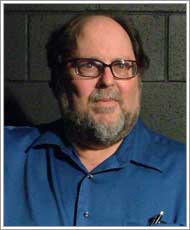 |
 |
 |
 |
 |
|
"Between Sand and Stars" is a collaborative piece developed by Sandglass Theater of Vermont, Gemini Trapeze (a pair of aerialists who hailed from Cirque du Soleil), and Rob Mermin of Vermont's Circus Smirkus. It is adapted from the work of "Little Prince" author Antoine de Saint-Exupéry. Eric Bass and Ines Zeller Bass, founders of Sandglass Theater, received Vermont's 2010 'Governor's Award of Excellence'.
The lead of the piece is a puppet, The Pilot, who, having crash-landed in the Sahara at the dawn of aviation in the 1920s, struggles to survive. Flashbacks to happier days featuring the two aerialists offer consolation and inspiration before his eventual rescue by Bedouins. The 90-minute show required 150 lighting cues.
Here Salzberg describes the color he used in specific situations and what he was trying to achieve:
|
|
 |
 |
Roscolux Colors & Gobos Used:
|
|
|

|
Related Roscolux Colors:
|
|
|
 |
|
|
|
|
|

"I used color here to differentiate between the oppressive heat of the desert, represented by the
downlight pool, and the sky. Psychologically I wanted to show how this intense, unbearable heat pushes the pilot down into the ground, which is in contrast to the aerialist shots that lift him up. The two colors that are in the desert scenes are R22, a color I use a lot-it's a nice, rich, reddish amber that did the job for this part of the scene. To highlight the puppet as he crawled from one pool of light to another in the sequence I used R03, which a much, much less saturated version of the same thing." |
 |

"This sequence illustrates the metaphor of flight. The aerialists, who personify flight, were a very important part of the show, and I worked very hard to differentiate their world from The Pilot's world in the desert. They're mostly lit from the sides, and the light from the high sides is R68. The mid sides, at about head height where they're swinging, are R67. I wanted to keep this scene cool all around. One way that you use color to lift the performer up is to have the warmer or lighter color coming from below, because that's something that only happens in nature when the person is higher than the light source." |

"This sequence uses the same R68 from up high, but it’s not as bright. I wanted the feeling of them above the desert, as if the sunlight was bouncing off the sand onto them. It's another one of those things that you only see when the person is very, very high or his shoes are on fire. The R68 from above is there as a balance, because as you get high the light from above becomes dimmer." |
 |

"Toward the end of this piece, after The Pilot had been rescued, there was celebration. A sunrise happened, which I did with R02 and R68; R80 on the backdrop. I'm very big on Rosco R68. I also use R22 and R37 a lot. I used gobos here, as well. Specifically, Rosco 77721 Breakup (Small) to reinforce the sense of 'altitude'. The performers moving through the dappled light heightened the feeling of speed and flight." |

|

|
| The Tony Award. The Obie. The Pulitzer Prize for fiction. These are among the many awards that lighting designer Jeffrey E. Salzberg has never won. He has, however, designed the lighting for theatre, ballet, and modern dance companies in New York and throughout the U.S. Among the companies he has worked for are the Houston, Chicago, and Washington Ballets, for whom he has lit ballets such as "Swan Lake," "Les Sylphides," and (of course) "The Nutcracker." He has lit contemporary plays such as Margaret Edson's "Wit" and A. R. Gurney’s "Far East." The New York Times called his lighting of New York City Ballet's Peter Boal "ingeniously atmospheric."
Salzberg has also participated in the arts funding process as a grant writer, a panelist, and a member of the Board of Directors of the Cultural Arts Council of Houston/Harris County. Besides lighting design and arts administration, he also designs web pages (his work can be seen at www.jeffsalzberg.com) and is the editor and co-author of the Stage Lighting for Students website (www.stagelightingprimer.com).
|

Jeffrey E. Salzberg
Photo by Timothy Parrish |
|

|
|
|
 |
|